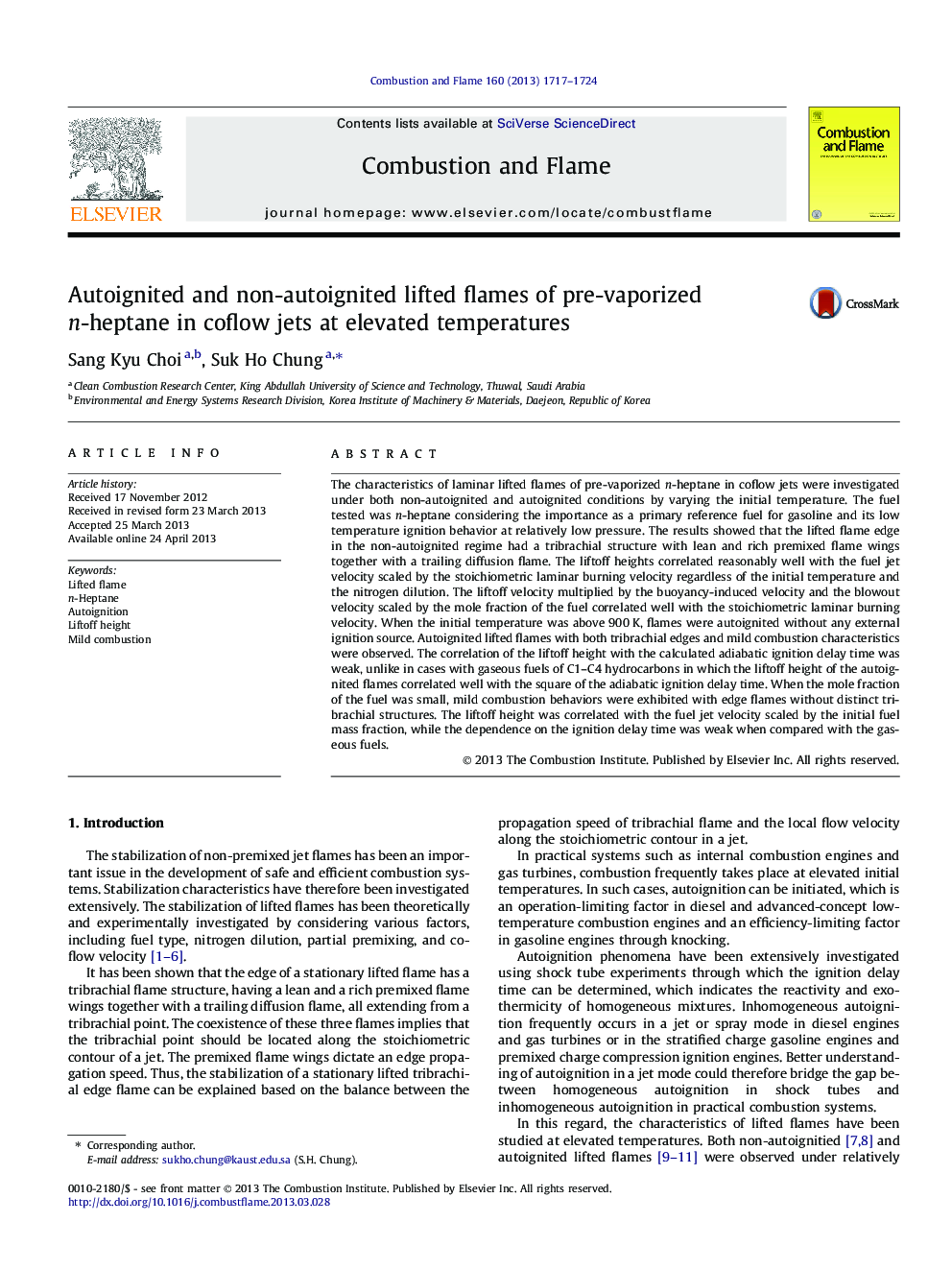| Article ID | Journal | Published Year | Pages | File Type |
|---|---|---|---|---|
| 166945 | Combustion and Flame | 2013 | 8 Pages |
The characteristics of laminar lifted flames of pre-vaporized n-heptane in coflow jets were investigated under both non-autoignited and autoignited conditions by varying the initial temperature. The fuel tested was n-heptane considering the importance as a primary reference fuel for gasoline and its low temperature ignition behavior at relatively low pressure. The results showed that the lifted flame edge in the non-autoignited regime had a tribrachial structure with lean and rich premixed flame wings together with a trailing diffusion flame. The liftoff heights correlated reasonably well with the fuel jet velocity scaled by the stoichiometric laminar burning velocity regardless of the initial temperature and the nitrogen dilution. The liftoff velocity multiplied by the buoyancy-induced velocity and the blowout velocity scaled by the mole fraction of the fuel correlated well with the stoichiometric laminar burning velocity. When the initial temperature was above 900 K, flames were autoignited without any external ignition source. Autoignited lifted flames with both tribrachial edges and mild combustion characteristics were observed. The correlation of the liftoff height with the calculated adiabatic ignition delay time was weak, unlike in cases with gaseous fuels of C1–C4 hydrocarbons in which the liftoff height of the autoignited flames correlated well with the square of the adiabatic ignition delay time. When the mole fraction of the fuel was small, mild combustion behaviors were exhibited with edge flames without distinct tribrachial structures. The liftoff height was correlated with the fuel jet velocity scaled by the initial fuel mass fraction, while the dependence on the ignition delay time was weak when compared with the gaseous fuels.
